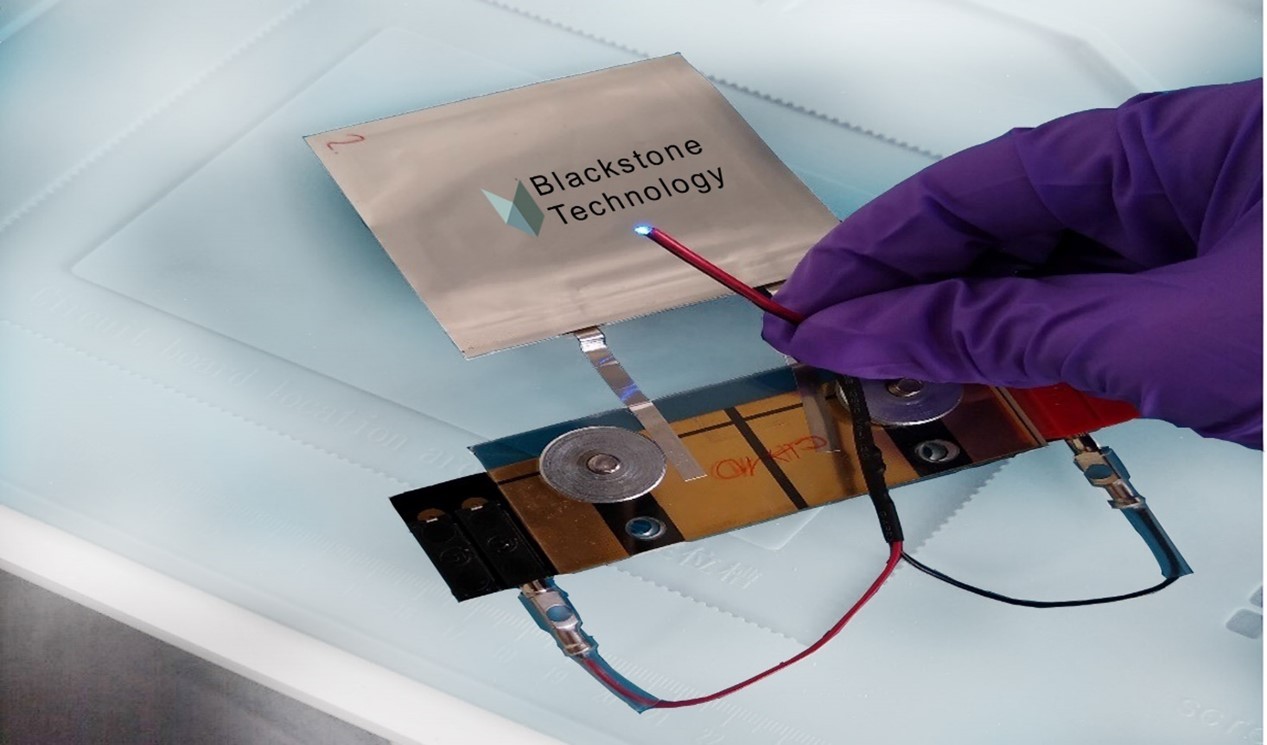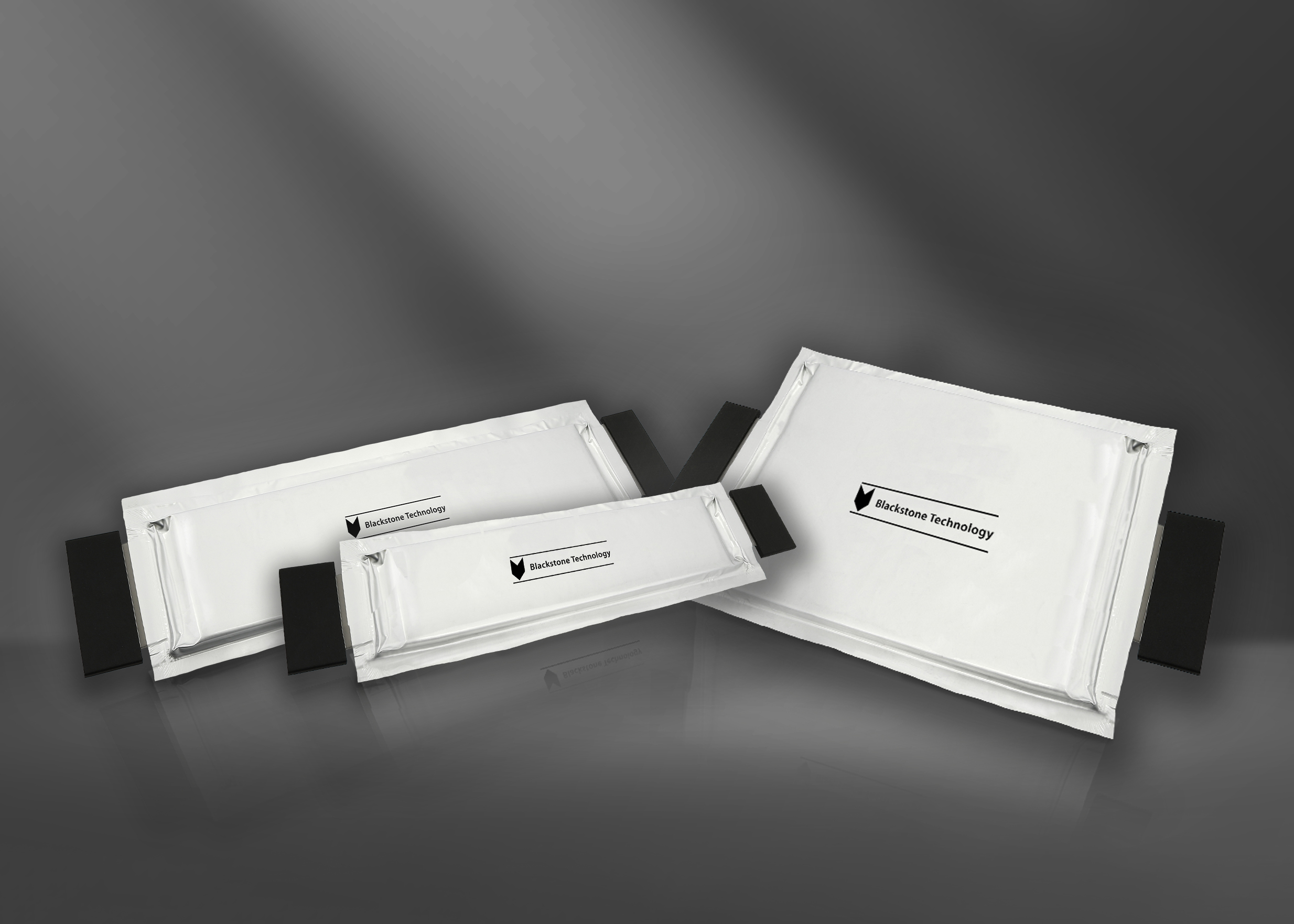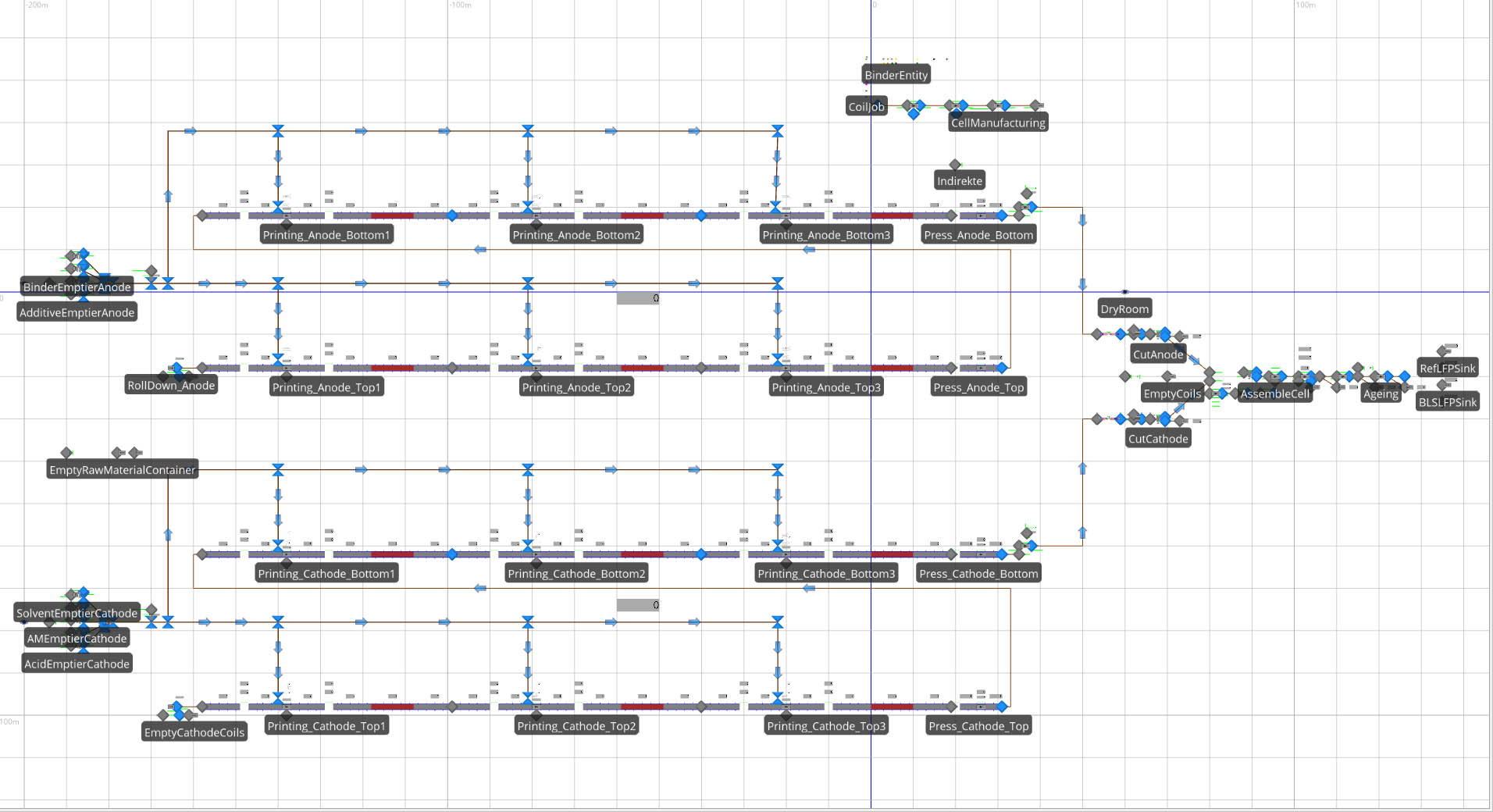Swiss company Blackstone Resources AG (SWX; symbol BLS, ISIN CH0460027110, WKN 460027110) has announced that it has demonstrated its battery 3D printing technology before the press and is opening its first production plant before the end of the year.
At a recent press event, the company was said to have presented its 3D printed lithium-ion phosphate (LFP) battery cells made using material from IBU-Tec. The company claims to have begun production on its LFP cells in Döbeln in Germany using Blackstone Thick Layer Technology. The cell is able to achieve 220 Wh/kg, compared to a traditionally made cell that achieves 166 Wh/kg.

The 5 x 5 sq cm pouch cell. Image courtesy of Blackstone Resources.

3D printed lithium ion batteries from Blackstone Resources. Image courtesy of Blackstone Resources.
Blackstone says that it is also beginning to manufacture nickel-manganese-cobalt (NMC) cells, but that it aims to produce solid-state batteries in the future, believing that it can increase energy density by 70 percent. Meanwhile, Sakuu, in the U.S., claims to already be 3D printing solid state batteries.
CEO Ulrich Ernst said, “In front of an assembled press and a large number of viewers in the online stream, we have now demonstrated: our patented 3D printing technology for the production of climate-friendly, sustainable and particularly powerful lithium battery cells is ready for series production!”
While there was a url shared for the show, it was difficult to find any press coverage of the event itself, which Blackstone claims was meant to be live but was rescheduled as an online presentation due to the pandemic. Therefore, it is difficult to validate if there really was an assembled press there to witness what is meant to be a nearly unprecedented technology.
However, the firm notes that a number of people presented at the event, including Robert Orten, CEO of Orten Electric Trucks; Thomas Sautter, of Voith SE & Co KG; Benjamin Friedrich, of ecolvolta AG; Dr Michael Roscher, of LioVolt; and Dr Axel Fuerst of the Bern University of Applied Sciences (BFH). Video coverage about (not of) the event is embedded below, with the YouTube caption: “A lot of press representatives came to the big press conference of Blackstone – among them also the ZDF. The reporters were able to convince themselves on site of our innovation: 3D-printed lithium batteries for a sustainable and environmentally compatible transport turnaround!”
According to Blackstone, the 3D printing system is capable of producing thicker “energy-storing layers in the battery cells, which increases the gravimetric energy density by an impressive 20 percent.” The size can also be adapted to customer needs, while the battery itself is described as 15 percent smaller than traditional batteries. Material saving is described as 20 euros/kWh and energy usage during production is said to be cut by 23 per cent.
“At the same time, the process relies on an environmentally friendly, purely water-based process and reduces waste materials by 50 per cent. In this way, we are making an important and sustainable contribution to the transport transition and in the fight against climate change,” said Ernst.
Given the fact that our industry is filled with hype and unbelievable technologies, it’s difficult to validate the work of Blackstone or Sakuu. This is particularly important when a company like Blackstone is publicly traded and involved in mining, an industry fraught with fraud, as I’ve discussed previously.
We’ve reached out to Dr. Axel Fuerst of BFH to confirm his participation in the event. However, BFH did publish a post validating the technology, stating (Google translated from German), “Researchers at the Institute for Intelligent Industrial Systems I3S at Bern University of Applied Sciences BFH have now carefully examined the manufacturing process for this battery. In a complex simulation, they were able to show that the 3D printing process patented by Blackstone actually reduces material costs by around 20 euros / kWh – mainly thanks to better utilization of so-called inactive materials such as separators and collector foils. Although these do not contribute to energy storage, they are nevertheless necessary in a battery.”

BFH’s simulation model. Image courtesy of BFH.
The company claims to be partnering with Orten Electric Trucks, a division of an established truck and trailer body manufacturer dedicated to electrifying trucks. Together with Voith SE, a Swedish manufacturer founded in 1867, the three firms aim to electrify buses with Blackstone technology. Blackstone also says that it may partner with a company called LioVolt, created only this year, to produce a bipolar lithium-ion battery.
Given the names involved, including Orten, Voith, and BFH, it would seem as though Blackstone is honest about its technology to the extent that it has partners on board and a university validating its existence. So, we may hedge our bets on the side of Blackstone being as on the level as any other startup in the space. With that in mind, we can assume that Blackstone’s Döbeln plant really will employ 38 people by the end of 2021, as the company states.
Subscribe to Our Email Newsletter
Stay up-to-date on all the latest news from the 3D printing industry and receive information and offers from third party vendors.
Print Services
Upload your 3D Models and get them printed quickly and efficiently.
You May Also Like
The Dental Additive Manufacturing Market Could Nearly Double by 2033, According to AM Research
According to an AM Research report from 2024, the medical device industry, specifically in dentistry, prosthetics, and audiology, is expected to see significant growth as these segments continue to benefit from...
Heating Up: 3D Systems’ Scott Green Discusses 3D Printing’s Potential in the Data Center Industry
The relentless rise of NVIDIA, the steadily increasing pledges of major private and public investments in national infrastructure projects around the world, and the general cultural obsession with AI have...
AM Research Webinar Explores Continuum’s Sustainable Metal Additive Manufacturing Powders
Metal additive manufacturing (AM) powder supplier Continuum Powders is working to develop solutions that empower industries to reduce waste and optimize their resources. An independent life cycle assessment (LCA) of...
3D Printed Footwear Startup Koobz Lands $7.2M in Seed Round
California-based Koobz is focused on reshoring the U.S. footwear supply chain with advanced manufacturing processes, including 3D printing. The startup just announced that it has added $6 million to its...
































